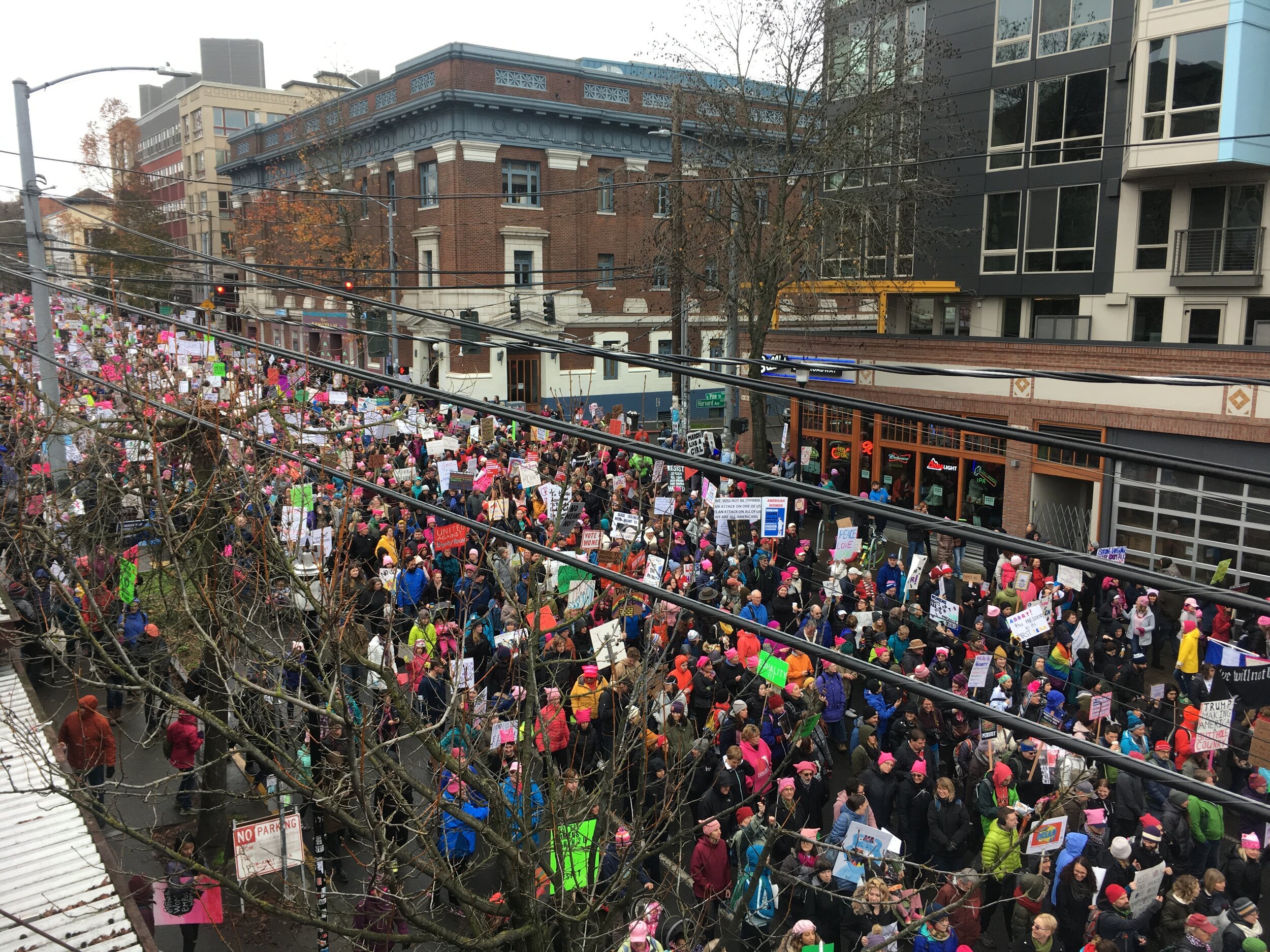Love as the Foundation for a New Politics
A few weeks back, before falling into a holiday haze, I went to hear Rabbi Michael Lerner speak at Town Hall. I knew of his activism against the Vietnam War as well as his criticisms of Israel’s actions towards Palestinians. I did not know he had penned eleven books, mostly on spirituality and progressive politics and that his new book, Revolutionary Love: A Political Manifesto to Heal and Transform The World would capture so much of my own recent thinking and theorizing.
At the age of 76, Rabbi Lerner’s latest appeal for more love and meaning in American politics builds on his life-long devotion to radical change through non-violent means without apology -- may I hope to be as bold in my 8th decade. He calls for a ‘Love&Justice Movement’ that will create ‘The Caring Society’: “a society that constantly nurtures our ethical and spiritual capacities to care for each other and the planet and that facilitates our ability to give meaning to our lives that transcends material satisfactions.”
To this end, he believes that:
· We need an alternative to the materialist reductionist view of the world and its dependence on endless growth and the maximization of wealth and power. Previous alternatives to capitalism (socialism or communism) will not work, in part, because they still neglect the basic human need for spirituality and meaning.
· We need to align our public policies, as well as the means by which we achieve them, with our explicitly stated values. We can ‘operationalize’ generosity, transparency, empathy and a new relationship to Mother Earth as deserving of our respect, care and reciprocity.
· We need a politics that makes room for public conversations about meaning, love and purpose. We can reach for this more humanistic vision and not be silenced by the ‘pragmatists’ who say that such political and economic transformation is unrealistic.
· We don’t have to play the game of politics the way it’s been played wherein the ends justify the means no matter the costs to our relationships. We can honor the humanity of those around us, especially that of the people with whom we disagree, while also challenging life-destructive and unjust policies that commit us to a path of severe disparity and ecocide.
· We have an opportunity to expand the narrative of the ‘Left’ -- specifically to reach those who voted for Obama in 2012 but Trump in 2016 -- by avoiding the shaming & blaming aspects of identity politics to focus instead on the aspects of the system that aren’t working for all of us thereby uniting across class, race and gender.
A study that Rabbi Lerner’s team completed for the National Institute of Mental Health on the dynamics of work and stress on middle and lower-middle class Americans found that most people do not care only for their material security but are just as motivated by a search for meaning and purpose. They express feeling disrespected by the ‘Left’ (reference the “deplorables” comment by Hilary Clinton) and perceive that they are being blamed for the inequities of a larger system.
A few examples he offers of policy proposals that align with ‘A Caring Society’ include:
· A living wage for all; guaranteed basic income; equal work for equal pay
· An Environmental and Social Responsibility Amendment to the Constitution
· Massively scaled federal housing investments for affordable housing as well as housing for homeless
· Democratization of corporate by-laws; greater representation by workers on all corporate boards
· A Truth and Reconciliation Commission to heal the wounds of slavery and genocide; Reparations for Black and Native Americans
· Restorative justice; educational opportunities for all people in prison; community policing and engagement
· Universal voter registration at birth; elimination of the Electoral College or support for the National Popular Vote Interstate Compact
As I read the chapter on policy proposals like these offered above, I feel the weight and inertia of my own political cynicism. Yet I can choose to see these proposals as simply representations of our fundamental interconnectedness made actionable. And Rabbi Lerner reminds us again and again that every attempt to rectify the historical and structural power imbalances that rely on the suppression of the many by the few has, over time, yielded fruit. It starts with a seemingly impossible dream for a different world that most see as ‘unrealistic.’ And as he said so succinctly the night of his talk, “we will never know what is possible until we struggle for what is desirable.”
As more of us yield to our desires for a new world, name them in beautiful detail and connect to others with similar aspirations, the forces of dominance give way. Not overnight and not altogether. But they do give way and more love eventually breaks through.
Rabbi Lerner has given us an exceptional outline for the kinds of conversations I want to be having more of in 2020. So join me on Saturday, January 25th for a gathering -- open house style -- to talk about our ideas for a new world, perhaps made manifest through a local Love&Justice movement, that could energize and inspire real political transformation this coming year.
Where: My place, 522 19th Avenue, between Jefferson and Cherry. On Metro Transit lines 3 and 4.
When: Saturday, January 25th, 4-7pm.
The meaty part of the conversation will probably kick-in around 5pm
Light food and drink provided. The more the merrier so bring whatever you’d like to share.
RSVP: lisa@creativegroundhq.com











